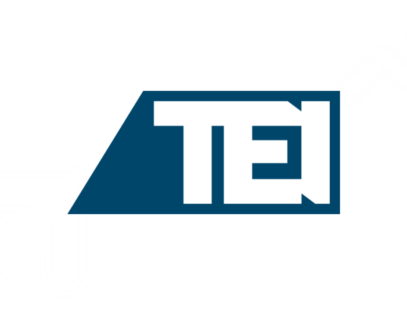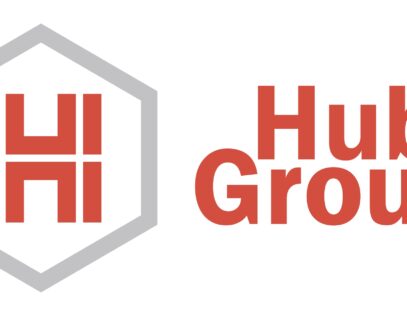FASB has raised the bar on tax transparency. For companies, that means new headaches—new systems, tighter controls, and higher compliance hurdles. For providers, it spells opportunity.
In this white paper, we dive into the details, the disclosures, and the opportunities this significant regulatory change presents for savvy service providers who are ready to step in as strategic partners.
Less Black Box, More Daylight
Few numbers matter more to investors than a company’s effective tax rate. For years, they and others have pressed for greater clarity and comparability in how those rates were calculated. How do companies reconcile their effective tax rate (ETR) to the statutory rate? Why do those rates differ? Where are they paying taxes? Most importantly, what does that mean for the stability of future cash flows—always an investor’s ultimate concern?
Under ASC 740, the answers were often obscured. Companies disclosed an ETR, but usually in broad categories, with cash taxes aggregated into a single line. That left investors guessing which jurisdictions drove the rate, how durable those drivers were, and whether cash payments matched reported expense. As global tax rules proliferated—minimum taxes, shifting cross-border regimes, vanishing credits, volatile state laws—those blind spots became not only harder to ignore, but also significantly more material.
After years of debate, FASB issued ASU 2023-09 in December 2023— a significant update to ASC 740. Effective for calendar year 2025, public business entities must now disaggregate their ETR reconciliation into standard categories, disaggregate material items, and disclose cash taxes by jurisdiction. Private companies and other entities follow in 2026.
By requiring greater transparency, FASB has addressed investor demands: a clearer line of sight into tax strategies, regional exposures, and the makeup of tax cash flows. For companies, though, the road ahead may be anything but smooth.
What ASU 2023-09 Means for the Provision
At its core, the provision is an estimate: what a company expects to owe in income tax expense for the current period. Under the prior ASC 740 framework, the provision reconciled book income to taxable income and produced an effective tax rate, but details were sparse.
What the new standard changes is how that story gets told. Suddenly, the provision is a bigger, more visible deliverable that must not only reconcile cleanly in far greater detail (and withstand audit)—it must make sense to outside readers. That’s a huge, qualitative shift.
Instead of a high-level roll-up, companies must now present a far more granular package:
- A standardized ETR reconciliation with material items called out.
- A cash-tax schedule split into federal, state and local, and foreign amounts—and where applicable further detailed by jurisdiction.
- Narrative explanations to add color to the quantitative disclosures.
So, what’s the impact for those who are required to produce these calculations?
- For finance teams, ASU 2023-09 transforms the provision from an internal compliance exercise into an external communication tool that investors will use to assess comparability, transparency, and tax risk.
- For service providers, it’s no longer about helping one company patch its provision. It’s now about scale: building repeatable frameworks that can be applied across dozens of clients—each with different jurisdictions, thresholds, and audit demands. In other words, a huge opportunity.
The Devil’s in the Disaggregation
Well-intentioned as they are, the new rules create immediate practical challenges for companies whose systems were never set up to handle this level of detail.
The central change: taxpayers must now present their ETR reconciliation in both percentages and absolute dollar terms, mapped into eight required categories. If any category shifts the rate by an amount which is more than 5% of pre-tax income at the statutory rate, it must be broken out further—sometimes by jurisdiction. And the states that make up greater than 50% of total state tax expense (not just current expense) must be named.
That can play out in material ways that companies haven’t faced before:
- A credit that once sat in a broad “miscellaneous” bucket may now need to be broken out if it tips past the threshold.
- A company operating in 20 countries may find that multiple jurisdictions suddenly must appear on their own lines—reshaping the story investors see.
- A valuation allowance reversal that was once buried in a roll-up could require its own disclosure, casting a spotlight on management’s assumptions about future profitability.
And what about those “eight categories”? Their job is to capture the main reasons a company’s tax rate shifts from the statutory baseline.
As such, they fall into three broad themes:
- Where taxes are paid
- State and local taxes (net of federal effect)
- Foreign tax effects (higher or lower rates in other countries), with additional disaggregation requirements for more material items.
- What the law says (and when it changes)
- Effect of new tax laws or rates
- Cross-border tax laws (e.g., global minimum taxes, GILTI, BEAT, withholding taxes)
- What counts (or doesn’t) as taxable
- Tax credits (R&D, renewable energy, foreign tax credits, etc.)
- Valuation allowance changes (whether deferred tax assets like loss carryforwards can be utilized in the future)
- Nontaxable or nondeductible items (permanent differences such as municipal bond interest)
- Changes in unrecognized tax benefits
Finally, companies must also disclose income taxes paid, net of refunds, broken out by U.S. federal, state/local, and foreign. If a single jurisdiction represents 5% or more of global cash taxes paid, it must appear on its own line.
These new disclosures give investors what they’ve long wanted: a clearer view of where companies pay taxes and why their effective rates diverge from the statutory baseline. But they also create a steep operational burden for companies unprepared for jurisdiction-level tracking or the clean categorical mapping FASB now requires.
That’s where service providers come in: transforming the burden into opportunity by standardizing processes, testing disclosures early, and helping clients avoid surprises with auditors and investors alike. In short, becoming vital partners in the provision process.
Turning Regulation into Readiness: Three Priorities for Providers
FASB’s update sets a new benchmark for tax disclosure. For companies, that means more work and added risk—every missed threshold, late-cycle adjustment, or vague narrative is a potential red flag. For service providers, the opportunity is clear: help clients anticipate and mitigate those risks by building systems that scale.
Three priorities stand out:
1) Data readiness: Close the gaps early.
Clients will need jurisdiction-level detail they may never have collected before. Start by auditing what jurisdictional data they already capture through their existing tax software. There will almost certainly be gaps—which, left unchecked, could translate into late-cycle surprises, disclosure errors, or audit adjustments.
You can add immediate value with standardized ETR reconciliation schedules, jurisdictional cash-tax templates, and tighter links to trial balances.
2) Process discipline: Lock in the audit trail.
The new rules will be tested in both disclosures and audits. Inconsistent application of the 5% threshold or shaky reconciliations are magnets for adverse findings.
Best advice? Map out workflows that reconcile book and tax data cleanly, apply thresholds consistently, and leave a clear, defensible trail. Even better: embed those threshold calculations into quarterly reviews—so you’re not scrambling to deal with materiality issues at year-end.
3) Controls and communication: Strengthen the narrative.
Numbers without narrative invite misinterpretation. Remember that disclosures will be read as signals of the client’s tax strategy and risk.
Consider developing client-specific disclosure narratives that can be refined throughout the year, rather than under deadline pressure. Helping your clients put controls around data quality—and explain recurring items in plain English—will raise confidence with investors, auditors, and analysts who matter most.
Narrative “toolkits” can keep messages consistent across disclosures, and across clients—an additional asset when scaling.
From Priorities to Practice: A Provider Roadmap
Priorities set the “what.” The roadmap sets the “when.” Here’s how service providers can phase implementation across the first reporting cycle:
- First 30 days: Assess. Map the current state. What data do clients already capture? Where are the gaps in jurisdictional cash taxes, ETR drivers, or audit trails?
- Next 60 days: Build. Create the scaffolding—standardized templates, threshold checks, and workflows that can be reused across clients.
- Next 90 days: Run. Test disclosures early, refine controls, and lock in repeatable processes so clients hit year-end without scrambling.
This phased approach keeps the task manageable and scalable.
The goal isn’t perfection in year one. It’s building systems that improve with each quarterly cycle and can absorb client growth without proportional increases in effort. And since most companies won’t have flawless systems ready by the first filing, providers can bridge the gap with interim processes that keep disclosures accurate while permanent fixes are built.
Done right, these frameworks deliver measurable results: fewer missed thresholds, smoother audits, and clearer investor communication. Most important, they transform year-end headaches into systematic processes that improve with every cycle.
Compliance Is the Floor, Confidence Is the Prize
ASU 2023-09 sets a higher bar for tax transparency. Companies will now face greater scrutiny as regulators probe more deeply and investors demand more detailed disclosure.
For service providers, that creates genuine opportunity. Those who build repeatable systems, embed smart controls, and deliver clear narratives will help clients master the new requirements rather than merely react to them—key to becoming the indispensable partners this regulatory shift demands.









